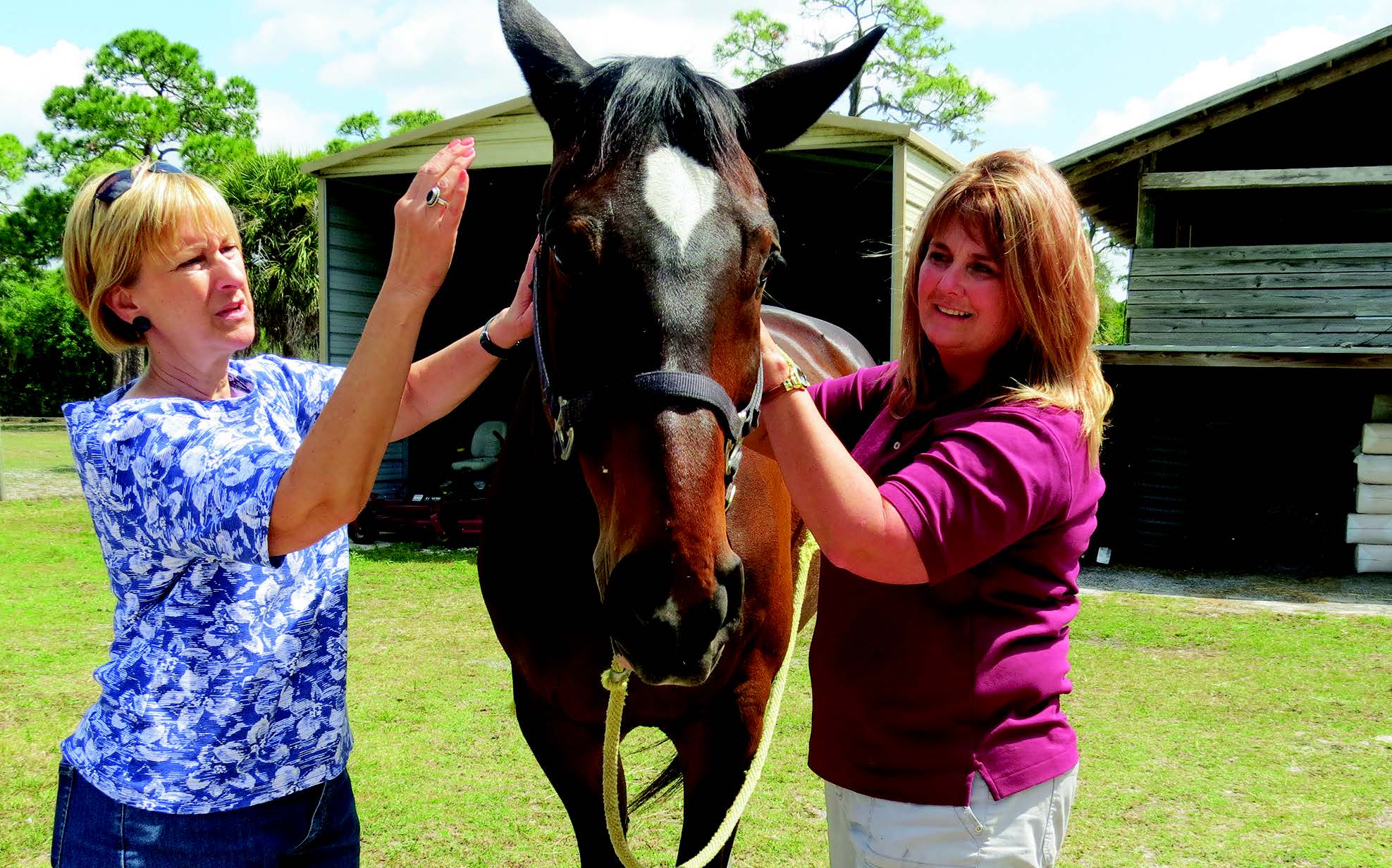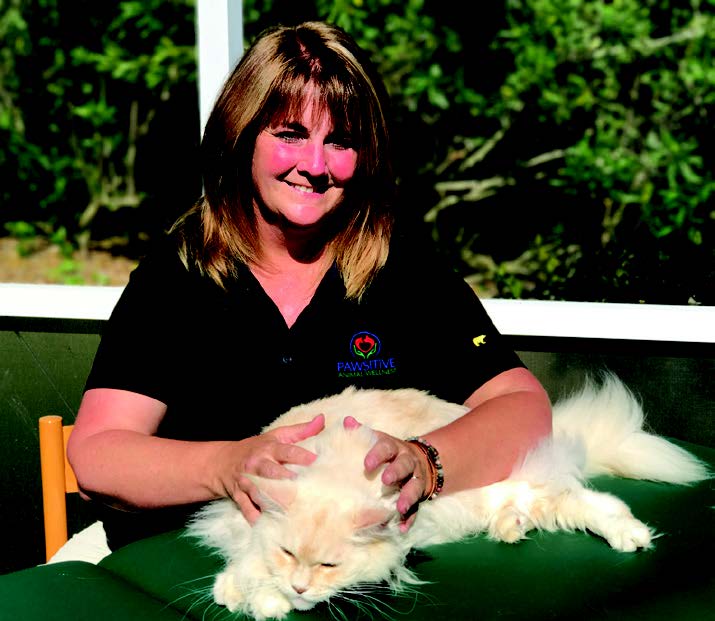Blog
Helping your pet through the storm
Touched-By-A-Paw was featured in the Venice, Florida 2017 Hurricane Guide.
By Cindy Baker and Chris Wheeler, Guest Writers How many times have you heartbreakingly watched a pet suffer through the effects of storm and/or noise phobias? With the upcoming potential for hurricanes, tropical storms and thunderstorms, there are resources for preparedness that include food, medications, evacuation planning. All this goes into making sure our families stay safe.
How many times have you heartbreakingly watched a pet suffer through the effects of storm and/or noise phobias? With the upcoming potential for hurricanes, tropical storms and thunderstorms, there are resources for preparedness that include food, medications, evacuation planning. All this goes into making sure our families stay safe.
Many of us, however, do little to prepare our animals for an approaching storm. The increase in wind, the sound of a hard rain or a big clap of thunder can trigger shaking, drooling, whining, hiding, urinating, defecating and other signs of fear and anxiety. Often, we wind up suffering along with them simply because we don’t know how to help.
Many animals with storm phobias aren’t fearful of other loud noises. However, animals who are fearful of storms often know a storm is on the way before we do. So, while the most common therapy for behaviors that are fear-driven is desensitization, the challenge of storm phobias is that there are a variety of triggers that set off the fear response – changes in barometric pressure, low-frequency rumbles, static electricity and even scents will cue the animal’s fear.
Since we can’t control the animal’s exposure to the feared stimulus, we fi nd it necessary to employ a variety
of tactics.
Learning some calming tips and tactics now, can help your best friend and you prepare. These suggestions take time to work. But imagine a scenario where you and your animal can help calm each other. A scenario where you both benefit with a calm, clear plan will help every member of the family.
1. KEEPING OURSELVES CALM – Our pets look to us for care and love. They are very perceptive and can easily sense what is going on our lives. If we are stressed they often reflect that. One of the first tips is to realize that they do pick up on your feelings and concerns. The more relaxed you are, the calmer your pet will be.
2. FINDING A SAFE PLACE – Prior to a storm when all is calm, help your pet fi nd a place in the house where it feels safe. You can observe where your pet goes when it wants to be alone. Remember this location so that you can gently guide them to this place as the storm approaches.
3. CALMING EXERCISE – This practice allows you and your animal to unwind, relax and enjoy one another’s presence. Sitting quietly, with your focus on the unconditional love fl owing through the palms of your hands, is a very special bonding time for you and your pet. Only 10 minutes a day can be a gift for both of you. The payoff in the long-run is immeasurable.
4. AROMATHERAPY AND FLOWER ESSENCES – There are calming products available to help your pet relax, such as flower essences and essential oils. These products are all natural and safe for your pet if they are a high quality therapeutic grade. Animals have heightened senses that protect them in the wild. Thus, they are very sensitive to all the ingredients in products. Therefore, only high quality products should be used on your pets. You can put a few drops of an essential oil on your pet’s blanket or give them drops of a flower essence (like Rescue Remedy) in their water.
5. SNUG-FITTING WRAPS – Other calming products such as snugfitting calming jackets or ace wraps can be helpful (Thundershirt, Storm Defender and Anxiety Wrap). These are most effective if they are tried out on your pet when they are already calm, well before a storm event.
6. THERAPEUTIC MUSIC – There is also calming music designed specifically for pets that does an amazing job at relaxing them. YouTube is a great resource for calming pet music and also instructions on “do-it-yourself” pet wraps.
It is critically important that these calming practices be accomplished prior to a traumatic event. During the height of the storm is not the time to try something new. After any traumatic event, if you notice that your pet is not responding normally or exhibiting unwanted behaviors, there is help available. Energy medicine techniques such as Healing Touch for Animals are very effective and can be life changing.
Healing Touch for Animals is an energy field therapy that supports the body to self-heal. The techniques used in the HTA program help balance and clear the body’s energy systems. This allows optimum physiological responses to stabilize the body, providing a sense of wellbeing. There are many things you can do to help your pet thrive in your family. If you are interested in learning more about Healing Touch for Animals, Chris Wheeler, a former veterinary technician, uses Healing Touch for Animals, aromatherapy, Bach flower remedies and other holistic healing modalities in her mobile practice.
There are many things you can do to help your pet thrive in your family. If you are interested in learning more about Healing Touch for Animals, Chris Wheeler, a former veterinary technician, uses Healing Touch for Animals, aromatherapy, Bach flower remedies and other holistic healing modalities in her mobile practice.
Pawsitive Animal Wellness operates in Venice and the surrounding areas. Wheeler can be reached at 941-650-3774 or facebook.com/pawsrq.
Cindy Baker is also a qualified Healing Touch for Animals Practitioner. Her business is Touched By A Paw and she can be reached at 484-459-8049 or touched-by-a-paw.com.
Visit healingtouchforanimals.com to learn more about Healing Touch for Animals. Courses are held locally throughout the year.







